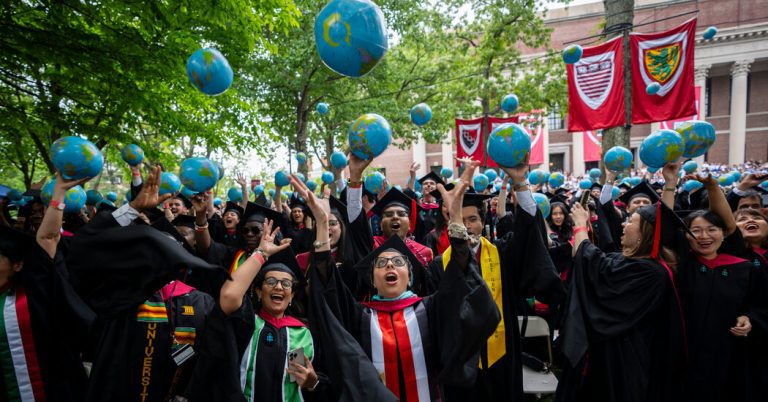For years, conservatives have condemned universities’ use of diversity statements, which ask job applicants to detail their commitment to improving opportunities for marginalized and underrepresented groups.
Critics called such statements dogmatic, coercive and, in a lawsuit seeking to end the practice in California, “a modern-day oath of allegiance” reminiscent of when teachers had to denounce the Communist Party.
However, the use of diversity statements continued to grow and eventually became a requirement when applying for a teaching job at many of the nation’s most selective universities. That seems to be changing.
Harvard University’s School of Arts and Sciences and the Massachusetts Institute of Technology recently announced that they will no longer require diversity statements as part of the hiring process for faculty positions.
The decisions of two of the nation’s top institutions of higher learning could influence others to follow suit.
“The switch has been flipped as of now,” said Jeffrey S. Flier, former dean of Harvard Medical School. Many faculty on hiring committees, he said, may have been reluctant to raise concerns about mandatory diversity statements before now. “But I think the large, silent majority of faculty who question the implementation of these programs and, in particular, these diversity statements — those people are being heard.”
The University of California system was the first to require diversity statements, starting about a decade ago. For proponents of the requirement, such statements were necessary if colleges were to create a welcoming environment for a diverse student population.
Today, some universities use the statements early in the recruitment process to screen applicants before they are even interviewed. Others review the statements later, as candidates reach the final round.
However, when Harvard and MIT asked their faculty about the value of diversity statements, they found little support.
Even some of the staunchest advocates of diversity initiatives seem lukewarm, at best, about requiring applicants to submit a statement.
“While there is value, I also think the value is limited,” said Paulette Granberry Russell, president of the National Association of Higher Education Diversity Officers.
Ms Granberry Russell said that while she believes conservatives have misrepresented diversity statements to blame all diversity programs, she believes the way to ensure a diverse candidate pool is to identify candidates from diverse backgrounds early in the hiring process.
“I don’t think a diversity statement is a substitute for a search process,” Ms Granberry Russell added.
At Harvard, there is still room for applicants to write about their commitment to diversity — in a broader context. Finalists for teaching positions will be asked to describe their “efforts to strengthen academic communities” and discuss how they would foster a “learning environment in which students are encouraged to ask questions and share ideas.”
The decisions by Harvard and MIT come amid a broader review of initiatives — commonly called diversity, equity and inclusion programs — that try to make institutions reflect the country’s diversity. More than two dozen states — including Texas, Florida, Arizona and Ohio — have passed laws restricting diversity programs in education. Corporate America, too, has moved to rethink diversity policies.
Harvard and MIT have faced constant outside pressure on the issue, including from angry donors and alumni. In addition, the US Department of Education and the House committee that oversees education are investigating the universities over allegations that they have not done enough to combat anti-Semitism on their campuses.
Other schools have faced legal action over required diversity statements. A lawsuit in California challenges their use in the University of California system on the grounds that it forces job applicants to hold a certain political position before being considered for a job.
“It was pretty much a political litmus test of what you had to say to get your foot in the door,” said Joshua P. Thompson, an attorney for the Pacific Legal Foundation, which is suing the University of California over its diversity. statement command. “The Constitution forbids it.”
He said he was optimistic that the Harvard and MIT decisions would lead to a different approach across academia. Mr. Thompson noted the enormous influence of the universities: “Harvard and MIT are two Goliaths in this space. And wherever they go, many universities will follow.”




